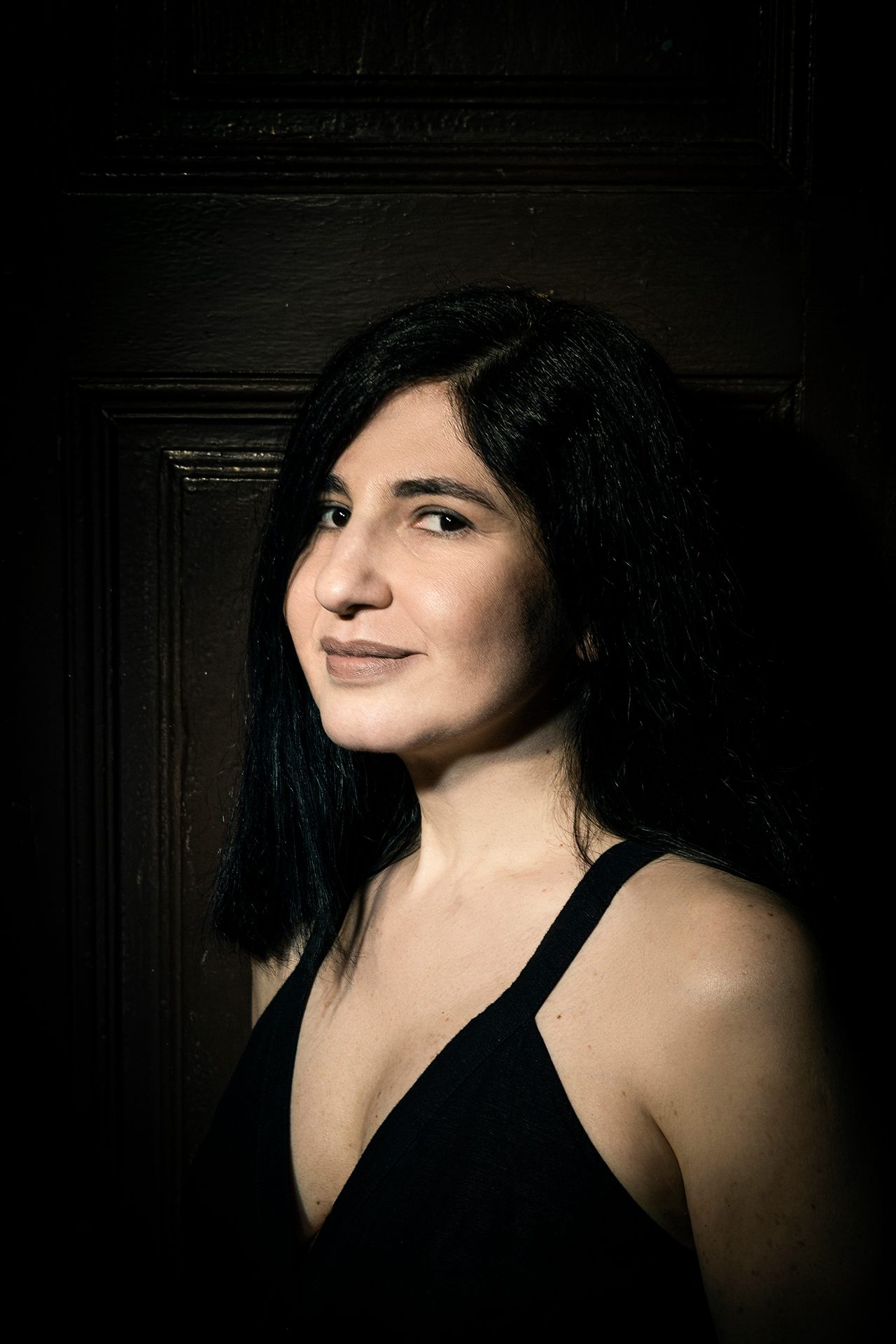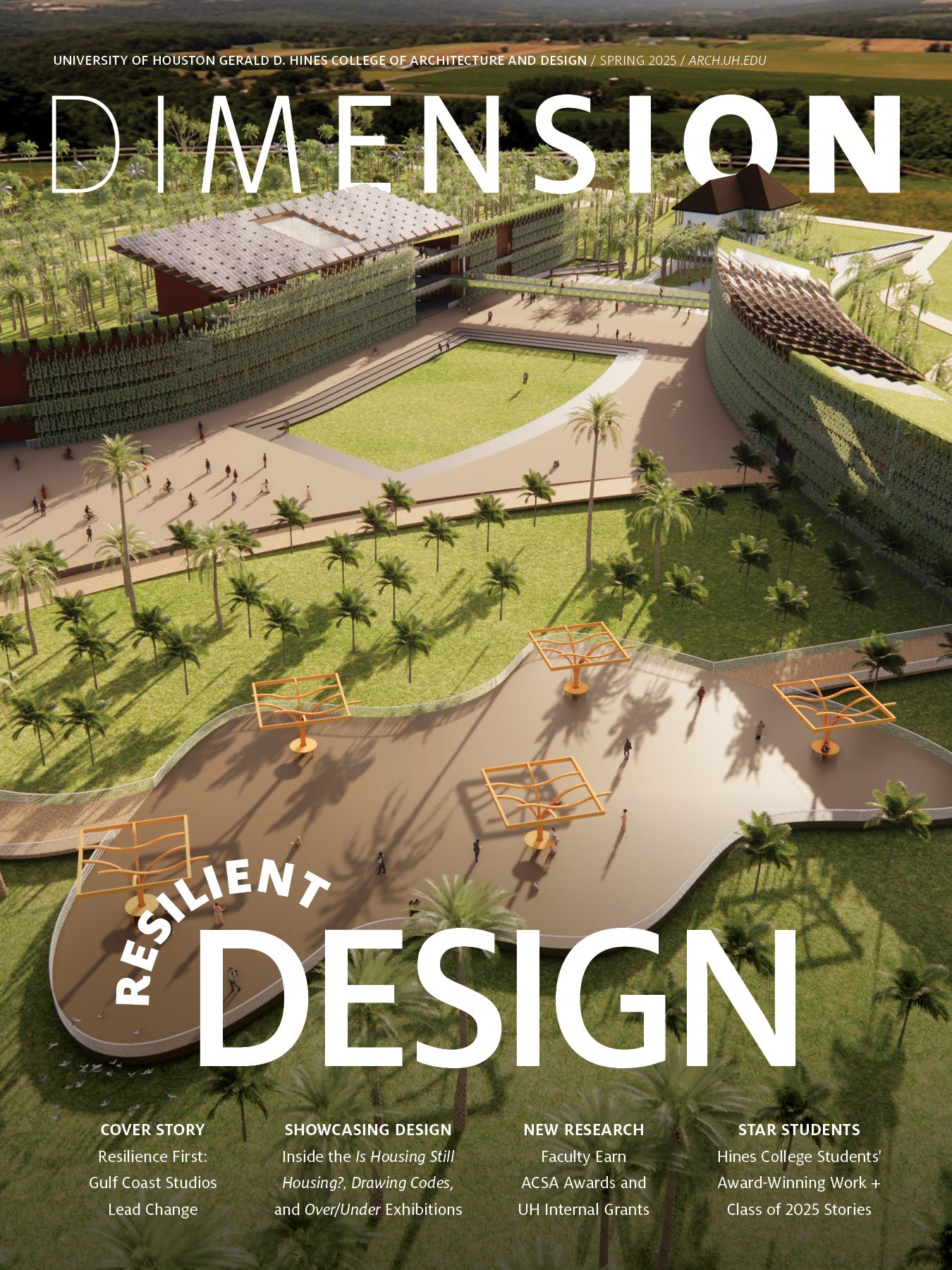Alumni Spotlight:
Claudia Joskowicz (B.Arch. '91)
May 22, 2025
above: Installation of Parallels 2022 at Nube Gallery, Bolivia
Name: Claudia Joskowicz
Hometown: Santa Cruz de la Sierra, Bolivia
Major: Bachelor of Architecture
Graduation Year: 1991
Employer: Wellesley College
Title: Associate Professor of Art

"My time at the Hines College imparted several valuable lessons. Most importantly, it instilled discipline and shaped my approach to art and design."
Why did you choose the Gerald D. Hines College of Architecture and Design? What drew you to design?
The Gerald D. Hines College of Architecture and Design stood out to me for its blend of rigorous academic training and practical, real-world application. The space architecture program, which was active with NASA at the time, was also unique and compelling. Growing up in South America, where modernism shaped the region's major cities, the influence of visionary architects like Oscar Niemeyer and Luis Barragán became deeply ingrained in my design sensibility. This early exposure cultivated a deep appreciation for the impact of design on the built environment and its ability to shape human experience. I was particularly drawn to the College’s emphasis on contextual design and its focus on addressing real-world challenges, which aligned with the socially conscious design I aspired to create.
What is one of your favorite memories from your time on campus? Was there a particular professor who influenced your education?
There are countless memories from studios, juries, galas, friendships, and intense 48+ hour charrettes. However, a seemingly mundane moment from the first few days of my second-year studio remains particularly vivid. Professor Peters pinned up a diverse collection of art and music images—a sort of mood board—while playing a song by The Smiths. He then remarked something like, "To create function and beauty, you must surround yourself with function and beauty." This moment stands out because it perfectly encapsulates the casual yet rigorous atmosphere within the studios, where profound insights could emerge from the ordinary. The dynamic between Professor Zemanek's theory and history classes and the studio environment fostered critical thinking in all of us.
above: Installation and video still of La niña de sus ojos 2022 at Nube Gallery, Bolivia
Tell us about a typical day in your job. Do you have a particular design or business philosophy?
As a visual artist working with film and video, focusing on landscapes and the urban fabric, there is no "typical" day. I often find myself working on location in various parts of South America. This work is inherently challenging and unpredictable, but that is precisely what makes it so exciting. A typical day changes based on the project phase. During pre-production, I spend time researching, scouting locations, and creating storyboards. I also handle practical tasks like budgeting, scheduling, and grant writing. Production involves travel and on-location filming or photography. Post-production is time-intensive, with months spent editing video and photos. When exhibiting work, I coordinate with galleries and museums, which often requires travel to oversee installations. Essentially, my work involves a mix of planning, fieldwork, and technical post-production, all driven by the specific demands of each project.
What is one career accomplishment of which you are particularly proud? How do you feel the College prepared you for this?
My career has been marked by several significant milestones. The publication of an artist's monograph by Turner Editorial in Madrid signifies a recognition of my twenty years of artistic work. The Guggenheim Museum's acquisition of two of my video installations within the last decade is another highlight, marking me as the first Bolivian video artist in an American museum collection. Additionally, in 2024, Cornell University held a symposium centered on my work, further acknowledging its critical and academic relevance. The College was instrumental in preparing me for these achievements, instilling in me the conviction and persistence necessary to pursue what some may view as an unpredictable artistic career.
above: Installation and video still of Some Dead Don’t Make a Sound 2015 at Die Ecke Arte Contemporáneo, Chile
What is one valuable lesson you learned during your time at the Hines College?
My time at the Hines College imparted several valuable lessons. Most importantly, it instilled discipline and shaped my approach to art and design. The College taught me how to perceive and understand the city—how it functions, how it is constructed, how it evolves over time, and how people interact within it. This understanding forms a crucial part of my creative process. I honed my ability to analyze how space influences the human experience, a recurring theme in my work, and to understand how built environments shape social interactions and power dynamics. The College provided a foundation for the critical examination of historical and political contexts, which is central to my work. My work frequently delves into the historical and political contexts of place, and it was at the College that I learned to dissect the history of buildings, spaces, and cities.
What advice would you give to current architecture and design students?
Today's architecture and design students face unprecedented challenges. My advice is to embrace a critical and narrative-driven approach. Don't just design buildings; understand the power dynamics at play and how your work might inadvertently reinforce or dismantle existing social and political structures. Think of your designs as stories: consider the narratives they create and how they shape people's experiences and memories of a place. And always be aware of the context. The social, political, economic, and environmental factors surrounding your projects are not just background noise; they are fundamental to how your work will be used and perceived. In a world grappling with constant change, your ability to design with critical awareness and narrative depth is crucial.
Get the Scoop
This story was first published in the spring 2025 issue of DIMENSION Magazine.
Read the magazine.
More College of Architecture and Design Stories

Hines College professor Gail Peter Borden, FAIA, along with Michael Bell (Columbia University) and Eunjeong Seong (Pratt Institute), opened Is Housing Still Housing? Houston’s Single-Family House. As economic, environmental, and technological shifts redefine how and where people live, the exhibition challenges the conventional understanding of housing and proposes new frameworks for addressing shelter at scale.

Mariana Marquez Keymolen (B.S. '21) started her Hines College journey through a summer course that introduced her to architecture and industrial design. "Although I studied industrial design, I sought out opportunities to engage in these types of projects whenever I could," she said, now working as a UX/UI designer and taking on projects like the "Better Block" mural project which recently won a Grassroots Initiative Silver Award from APA Houston.

At the beginning of March, the American Institute of Architects (AIA) Fort Worth Design Awards celebration honored Hines College students for their outstanding projects in the 2024 AIAFW Student Design Awards. This year’s class of winners not only continued a tradition of winning high praise from the AIAFW Student Design Awards for the fourth year in a row, but they also took home three out of the four top prizes.





